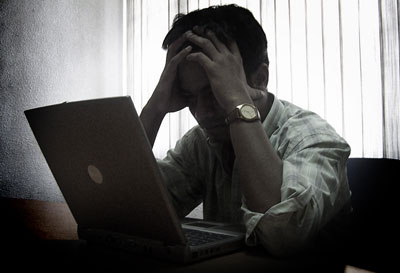“If every gratified craving from heroin to designer handbags is a symptom of “addiction,” then the term explains everything and nothing”
Amanda Heller ......
The Internet is so far one of the greatest inventions of all time, it provides information about anything and everything. The Internet has made it easy for people to communicate, acquire information, learn new things, gain and maintain relationships. Internet Addiction Disorder was proposed as a disorder by Ivan Goldberg in 1995, is most commonly called problematic Internet use (PIU). Griffith considered it to a subset of behaviour that meets the 6 “core components” of addiction, such as salience, mood modification, tolerance, withdrawal, conflict, and relapse. An estimate says there were about 42 million internet users in urban India in 2008 as compared to 5 million in 2000. Researchers from the National Institute of Mental Health and Sciences (NIMHANS), Bangalore, revealed that in India 73% of teenagers have psychiatric distress, and that children in the age group of 13 and 17 are mostly addicted to Facebook, Whatsapp and other social networking sites.
Symptoms of Internet Addiction Disorder
Internet Addiction Disorder (IAD), a psycho-physiological disorder includes tolerance, obsession, affective disturbances, and interruption of social relationships, frustration, anxiety, and/or irritability when not able to go online, dry eyes and vision problems, poor personal hygiene, insomnia, poor nutrition, headaches, back pain, and neck pain, carpal tunnel syndrome. Several reports suggested that 1 in 8 Americans suffer from Internet uses, similarly the problem is more prone in China, Taiwan, and Korea where 30 % or more of the population suffer from problematic Internet uses.
An estimate revealed that over 70% of Internet addicts also suffered from other addictions, mainly to drugs, alcohol, smoking, and sex which leads depression, mood disorders, social disorders, and anxiety disorders.
Types of Internet Addiction Disorder
- Information overload: Excess online surfing leads to decreased productivity at work and fewer interactions with family members.
- Cybersex addiction: Excessive use of internet pornography, adult chats often affects real-life relationships.
- Net Compulsions: Obsessive online gambling, shopping and gaming are all examples of net compulsion
Treatment for Internet Addiction
Cognitive Behavioural Therapy (CBT): It is designed to treat depression, including a number of mental disorders. This therapy is based upon a combination of basic behavioural and cognitive principles.
Dialectical Behavioural Therapy (DBT): DBT is a specific type of cognitive-behavioural psychotherapy developed in the late 1980s by psychologist Marsha M. Linehan to help better treat borderline personality disorder. Since its development, it has also been also used for the treatment of mental health disorders caused as a result of IAD.
Individual, group, and family therapy: It plays a critical role in initial assessment of mental health symptoms, in IAD, better collaborative care provide by family members and friends is not only improves the addiction level but also improves the mental health.
Behaviour modification: This approach is, based on the principles of operant conditioning that replaces undesirable behaviours with more desirable ones through positive or negative reinforcement.
Equine therapy: The therapy makes use of horses to help promote emotional growth.
Expressive arts therapy: This is a multimodal approach to therapy similar to its cousins therapy and music therapy. Expressive arts therapy may incorporate writing, drama, dance, creative movement, painting, and/or music, sports, adventure programming, and leisure education.
Recreation therapy: Therapeutic Recreation (TR) is a treatment service designed to restore, remediate and rehabilitate a person’s level of functioning and independence in life activities, to promote health and wellness as well as eliminate
Therapeutic Methods: The use of selective serotonin reuptake inhibitors (SSRIs) for the treatment of certain symptoms that may accompany Internet addiction, including anxiety and depression is useful to cure IAD.
Measuring internet addiction:
The Internet Addictive Disorder (IAD) can be scaled by adapting the DSM IV (Diagnostic and Statistical Manual of Mental Disorders (DSM), developed by the American Psychiatric Association. In addition Brenner developed the Internet-Related Addictive Behaviour Inventory (IRABI) comprising of 32 true and false questions. Diagnostic Questionnaire (DQ) based on DSM IV includes 12 questions to formulate an Internet Addiction Test (IAT).
Concluding Remarks:
Rapid expansion and proliferation of the internet has provided better opportunities for communication, information and social interaction. The excessive undisciplined use by individuals has led to the emergence of the internet addiction, so it is necessary to develop strategies for prevention of internet addiction as well as therapeutic interventions, which is vital for promoting healthy and safe use of the Internet.
